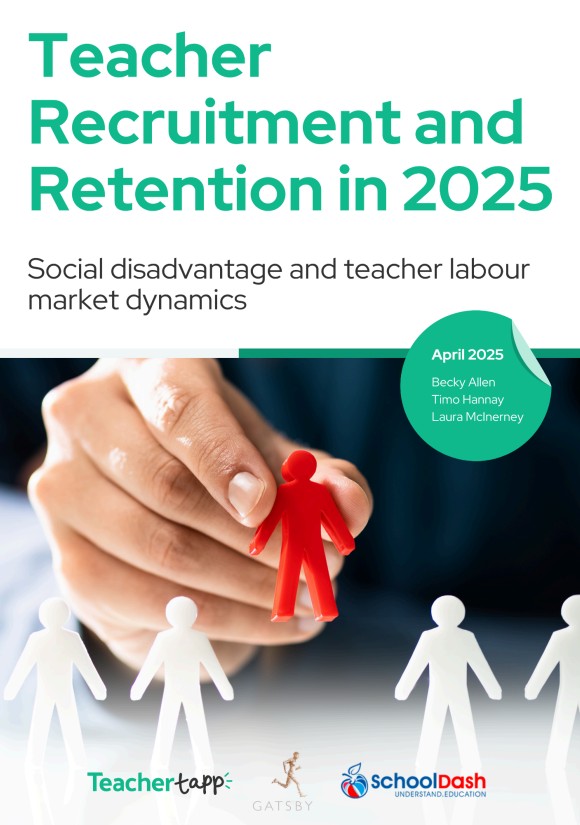The Teacher Tapp and SchoolDash annual report on teacher recruitment and retention,
funded by Gatsby Foundation, provides insights into the current state of the teaching
profession in England. By monitoring job advertisements and conducting surveys with over
10,000 teachers, the report presents key trends and challenges. Here are the key findings.
Key Finding 1: Secondary teacher recruitment activity is significantly lower than in
recent years. Job advertisements for secondary school roles are down 31% compared to
last year, and 22% lower than in the pre-pandemic 2018/19 academic year. While recruitment
levels were typical in autumn, activity has slowed markedly since January, suggesting a
quieter spring term for hiring—though some of this may yet appear in April/May data, to be
captured in our summer update.
Key Finding 2: Both supply- and demand-side factors are contributing to the
current slowdown in secondary teacher recruitment. Fewer teachers are changing jobs
following a period of high post-pandemic turnover, while at the same time,
schools—particularly in areas like London—are anticipating future declines in pupil numbers
and are responding with more cautious staffing plans. Schools also face serious budgetary
pressures. As a result, 44% of secondary headteachers expect to reduce their teacher
headcount in September, suggesting a contraction in the workforce may begin even before
student enrolment numbers fall.
Key Finding 3: Falling pupil numbers are reducing demand for primary teachers,
particularly in certain regions. Primary schools—especially in London and the North
East—are responding to demographic decline and budgetary pressures by reducing staff
numbers, merging classes, or increasing senior leaders’ teaching responsibilities. Only 5% of
primary headteachers expect to increase teacher numbers next year, while 36% expect a
reduction, contributing to a subdued recruitment picture across the phase.
Key Finding 4: Teachers’ long-term commitment to the profession remains
significantly below pre-pandemic levels. The proportion of teachers who expect to still
be in the profession in three years has fallen from around 75% before the pandemic to
approximately 60% today. Although this figure appears to have stabilised, it reflects a
sustained shift that will continue to challenge schools through higher turnover and greater
staffing instability. Underlying concerns include limited flexibility, alternative career options,
pay, accountability, and pupil behaviour.
Key Finding 5: Detailed socio-economic context beyond free school meal eligibility
can matter. While traditional measures of disadvantage, such as free school meals and Pupil
Premium, explain much of the variation in school recruitment activity and survey responses,
other socio-economic factors appear to have effects too, for example in the relative demand
for teachers across different subjects and for technicians of all types, as well as for survey
responses about commitment to teaching, job satisfaction and pupil behaviour.
